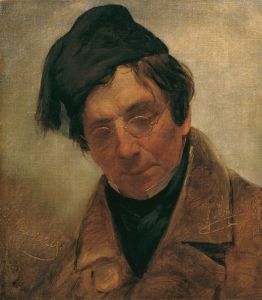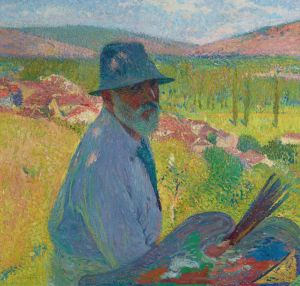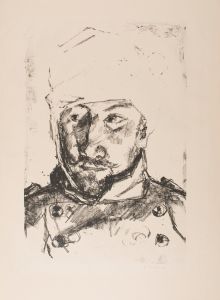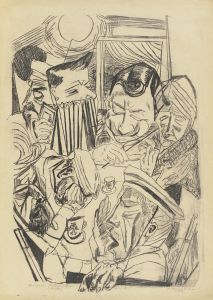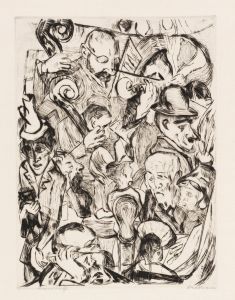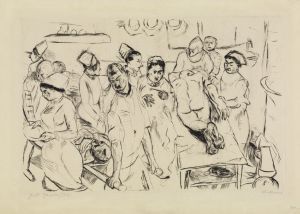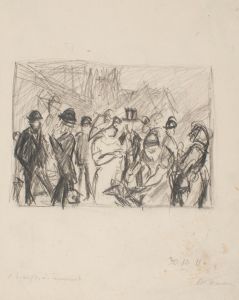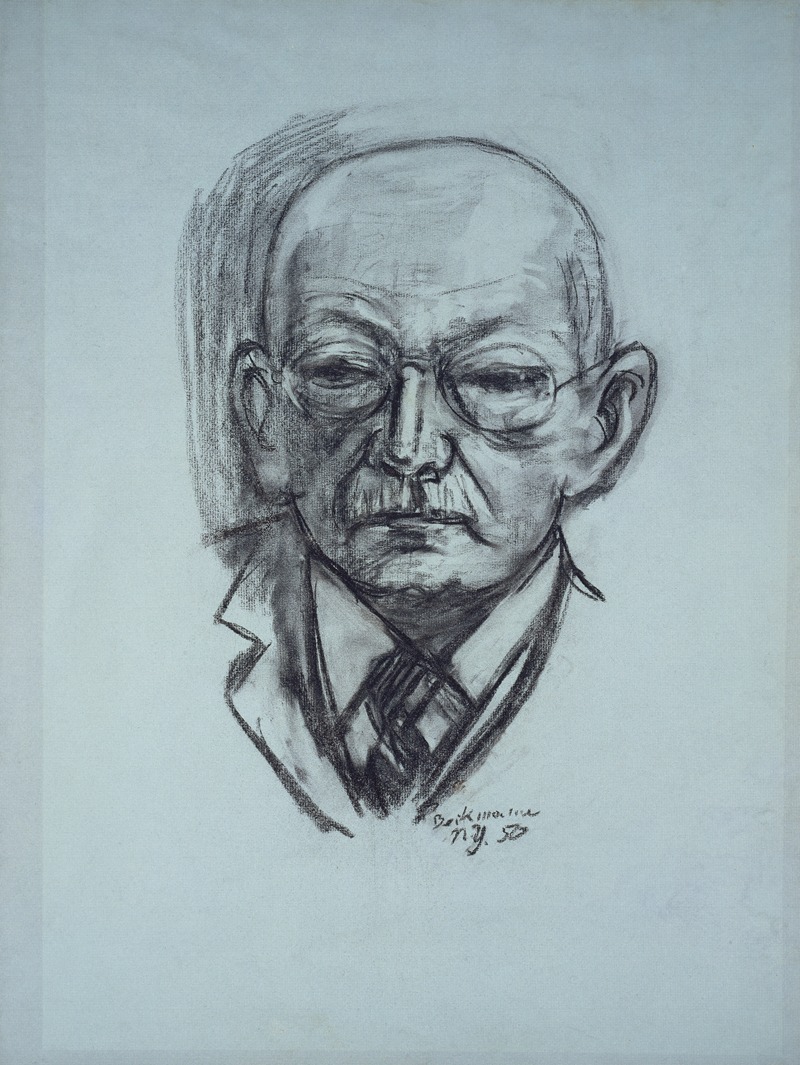
Bildnis Georg Swarzenski
A hand-painted replica of Max Beckmann’s masterpiece Bildnis Georg Swarzenski, meticulously crafted by professional artists to capture the true essence of the original. Each piece is created with museum-quality canvas and rare mineral pigments, carefully painted by experienced artists with delicate brushstrokes and rich, layered colors to perfectly recreate the texture of the original artwork. Unlike machine-printed reproductions, this hand-painted version brings the painting to life, infused with the artist’s emotions and skill in every stroke. Whether for personal collection or home decoration, it instantly elevates the artistic atmosphere of any space.
Max Beckmann's "Bildnis Georg Swarzenski" is a notable portrait painting that captures the likeness of Georg Swarzenski, a prominent figure in the art world during the early 20th century. Max Beckmann, a German painter and printmaker, is renowned for his contributions to the New Objectivity movement, which emerged in Germany in the aftermath of World War I. This movement was characterized by a realistic style combined with a critical social commentary, often reflecting the tumultuous socio-political climate of the time.
Georg Swarzenski was a distinguished art historian and museum director, known for his work at the Städel Museum in Frankfurt, Germany. His influence in the art community was significant, as he played a crucial role in the acquisition and promotion of modern art during his tenure. Swarzenski's leadership at the Städel Museum helped to shape the institution's collection, making it one of the most important art museums in Germany.
The portrait "Bildnis Georg Swarzenski" was painted in 1928, a period when Beckmann was at the height of his artistic career. This era was marked by Beckmann's exploration of complex themes and his development of a distinctive style characterized by bold lines, dramatic compositions, and a vivid use of color. Beckmann's portraits are particularly noted for their psychological depth and the way they convey the inner life of the subject.
In "Bildnis Georg Swarzenski," Beckmann employs his signature style to depict Swarzenski with a sense of gravitas and introspection. The painting captures not only the physical likeness of Swarzenski but also suggests his intellectual presence and his significant role in the art world. Beckmann's use of color and form in this portrait reflects his ability to convey the character and essence of his subjects, making his portraits stand out as profound studies of human nature.
The relationship between Beckmann and Swarzenski was likely one of mutual respect, as both were influential figures in the German art scene. Beckmann's decision to paint Swarzenski can be seen as a testament to Swarzenski's impact on the arts and his support for contemporary artists of the time. This portrait is a reflection of the interconnectedness of artists, historians, and institutions in the cultural landscape of Weimar Germany.
"Bildnis Georg Swarzenski" is part of the collection at the Städel Museum, where it continues to be an important piece within the museum's holdings. The painting not only represents Beckmann's artistic prowess but also serves as a historical document, offering insights into the cultural and intellectual milieu of the period. Through this work, viewers can appreciate the dynamic interplay between artist and subject, as well as the broader context of art history in which both Beckmann and Swarzenski played pivotal roles.
Overall, Max Beckmann's "Bildnis Georg Swarzenski" is a significant work that exemplifies the artist's mastery of portraiture and his ability to capture the essence of his subjects. It stands as a testament to the enduring legacy of both Beckmann and Swarzenski in the history of art.





